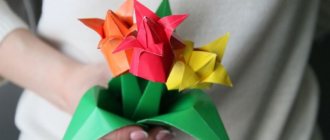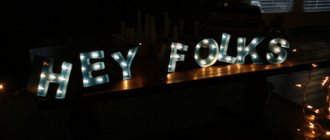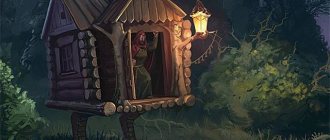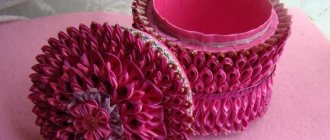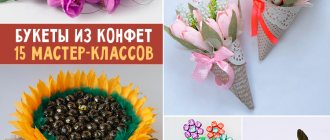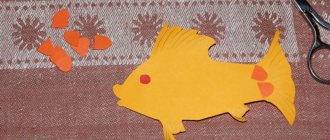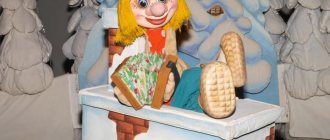It is important for every housewife that there is order everywhere in the house. This is especially true for the favorite field of activity of every representative of the fair sex - needlework. Convenient and practical accessories help to neatly store small items for creativity: boxes for ribbons and threads, jars for buttons and pins, soft and colorful needle cases.
In any store of useful handicraft items you can find a huge number of original pincushions for every taste, but the most expensive and favorite accessory will always be the one you make yourself.
You can keep this bright, unique product for yourself or give it to someone as an original souvenir. To understand how to make a pincushion with your own hands, just familiarize yourself with some recommendations and watch the master class. A decorative item created with your own hands will not only decorate the interior, but also help in work and creativity.
The simplest pincushion-cushion
Do-it-yourself pincushion, photos, diagrams, master classes, very easy and beautiful - the Internet is replete with such headlines. Before mastering the production of complex models, you need to try your hand at something simple.
We suggest making a small pillow like this for storing needles. Procedure:
- Cut two square blanks from scraps of fabric you have lying around.
- Sew them together, remembering to leave a gap.
- Turn out the accessory, having previously made 1-2 notches in each corner.
- Fill with filler and sew up the remaining gap.
- Decorate the craft to your taste.
What types of pincushions are there?
There are many types of pincushions, from traditional pillows to figured models. They are distinguished by the method of fastening: wall-mounted, table-mounted, wrist-mounted, with Velcro, magnets, ties.
On the site you can find photos of original hand-made needle beds. Take advantage of the master class on how to make a pincushion and you will have a wonderful assistant.
Simple wrist pincushion
This is another easy pincushion. To create it, you will need:
- chintz or cotton;
- threads to match the fabric;
- Velcro;
- button;
- holofiber.
Follow the following instructions:
- Cut from the prepared fabric 2 circles with a radius of 5 cm and 1 strip 10 cm wide and a length equal to the arm circumference +3 - 4 cm.
- Place the pieces together and sew, leaving a hole. Trim the seams.
- Turn the product inside out and fill it with filling. Sew the gap by hand using a blind stitch.
- Using a needle and thread, pierce the center from the face of the craft, throw it over the edge and stick it into the center, but from the inside out, tighten it tightly.
- Repeat step 4 until you divide the workpiece into 8 segments. Decorate the center with a button.
- Fold the rectangle of fabric in half along the long side, tucking the edges inside, and sew it on a machine.
- Sew on the Velcro and the round pad you made earlier. A simple hand pincushion is ready!
Pincushion "Elephant"
For work we will need the following tools and materials:
- thick cotton fabric;
- matching lace;
- "Iris" threads;
- black beads for eyes;
- a piece of felt;
- sewing threads;
- needle;
- scissors;
- marker;
- filler (cotton wool or holofiber).
Sew an elephant: step-by-step master class
First, print out the pattern:
Now we transfer it to the fabric: fold the fabric in half face to face, apply the cut out pattern, trace it with a marker or pencil. We cut out the baby elephant taking into account the seam allowances and stitch it around the entire perimeter, leaving very little space for stuffing the product.
Using special zigzag scissors or any regular ones with a sharp end, we make zigzag notches along the edges without touching the stitching.
Turn the workpiece right side out.
We fill the future pincushion tightly with filler, starting from the trunk.
We tie a knot on a tight cord, then stick a needle and cord in the right place into the needle bed, pull out the lace and secure it.
Having tied the string, we fluff its tip, forming a brush.
We finally sew the baby elephant’s body together using a hidden seam.
Now we cut out the ears from felt scraps.
Using “iris” thread to match the felt, we sew the outside of the eyelet with a blanket stitch.
Using the same overlock stitch, we sew the elephant’s ear. We repeat the same with the second ear, not forgetting about the symmetrical arrangement of the parts.
We thread a black thread through a needle and stick it into the places where the eyes will be located. We sew on the beads and embroider the eyelashes with the same thread.
The baby elephant pincushion is ready!
Round pincushion in retro style
To create this item:
- Cut out a round piece of cardboard to the size you require.
- Attach the template to the selected fabric and trace with a pencil.
- Embroider the piece with thread or beads.
- Cut the fabric, not forgetting about the allowances.
- Pass the workpiece around the perimeter with a “forward needle” seam and pull it slightly.
- Fill the future product with padding polyester.
- Cover with a cardboard base, tighten the thread a little more and secure with a knot.
- Run stitches for extra strength. Cut a circle from fabric with a diameter equal to the diameter of the future accessory and glue it to the cardboard.
The photo of a retro-style pincushion shows that it can be decorated not only with embroidery, but also with lace.
Sew a hedgehog: a master class for beginning craftswomen
First, print and cut out the pattern, transfer it to the fabric and cut it out with small seam allowances.
Then, using an overcast stitch, we sew the muzzle and back together, and then sew the resulting parts together. Turn the workpiece inside out.
Sew on beady eyes. We cut out a mushroom with a leaf from yellow, red and green felt, sew on the applique with the same overcast stitch: the mushroom cap with red thread, the stem with yellow thread, the leaf with black or dark green.
We sew on the belly of the hedgehog, leaving a little space for turning it inside out and stuffing the pincushion with holofiber.
We stuff the toy tightly and sew up the hole with hidden stitches.
We embroider the hedgehog’s nose, draw or embroider the eyebrows.
The pincushion is ready! Funny little animals can serve not only for storing needles and pins, but also as a toy for your baby;)
Pincushion “Pumpkin”
Consider a master class on making a pumpkin-shaped pincushion:
- Cut two circles with a radius of 6.5 cm from the material, stitch, leaving a gap.
- Turn the piece inside out, fill it with stuffing and sew up the hole.
- Thread a needle and thread into the center of the pad and form 8 identical sectors, pulling the product.
- Decorate the middle of the craft with a button, a composition of flowers or beads.
How to sew a pincushion “Stump”
For work we will need the following tools and materials:
- sheets of colored felt brown (25x15 cm), beige (9x9 cm), red (5x8 cm), beige (9x8 cm), white (10x7 cm), green (5.5x6.5 cm) and light green (5x6 cm);
- thicker and thinner sewing threads;
- a couple of black beads;
- glue gun or glue with a brush;
- needle;
- scissors;
- holofiber for stuffing hemp.
Pincushion bracelet
Below is a simple technique for making a wrist pincushion from a plastic cover and elastic band:
- Make slits in the lid of a 5-liter canister according to the diagram.
- Insert the elastic, twisting the seam inside the lid and secure with glue.
- Secure the beautiful pincushion by sealing the side of the lid with braid.
Just three steps – and the needlewoman’s irreplaceable assistant is ready!
Note!
- DIY gifts for February 23rd - a large selection of ideas for creating unusual gifts for Defender of the Fatherland Day
- What to give a 2-year-old boy - a list of the best options for an interesting and useful gift (120 photo ideas)
- Papier-mâché - TOP 120 photo reviews of original products. Detailed instructions for beginners on creating beautiful crafts
Pincushion in the form of a sewing machine
Manufacturing instructions:
- Make a pattern for a fabric pincushion.
- Sew both base elements, attaching a piece of fabric to the upper edge of one of them - the core of the sewing unit.
- Sew one side first, then the other. Sew the stand.
- Turn the machine blank inside out and insert cardboard cut strictly to the size of the pattern.
- Fill the bottom and top of the product with filler.
- Sew the top of the pincushion to the stand.
- Insert one toothpick in place of the needle, place the second in the area where the spool of thread is attached. Sew the button in the area where the wheel would normally be placed.
Pictures of a homemade pincushion clearly demonstrate what beauty can be achieved with due diligence.
Pincushion-book
To organize needles of different sizes or purposes, a book-like needle case is suitable. Take felt or other similar non-woven material - then you won’t have to process the edges. Although you can stitch together multi-colored fragments of chintz in a patchwork style.
Cut out a 12x19 cm rectangle for the cover and another one or two smaller ones for the pages. Place the rectangles on top of each other, fold them in half and stitch in the middle. Press the book through the cotton backing so that it holds tighter. Decorate the cover, make a clasp or ribbon ties, and sort the needles across the pages.
Photo: dizajnhome.ru
Photo: rukodelnieradosti.blogspot.com
Pincushion hat
This work requires the use of the following things:
- cardboard;
- a piece of knitwear;
- holofiber type filler;
- vintage style ribbons;
- artificial flowers;
- glue, scissors, thread.
To get a hat pincushion with your own hands, you need:
- Cut a circle out of cardboard. The optimal diameter is 10.5 cm.
- Cut the fabric by cutting out two circles. The diameter of one is 22 cm, the second is 14 cm.
- Connect the fabric parts of a larger circle by inserting a cardboard blank between them and stitch, carefully draping the edges.
- Take blanks of a smaller diameter and place holofiber in the center. Next, first sew 4 edges that are opposite to each other, then all together.
- Connect the 2 parts of the product together.
- Decorate the hat with vintage ribbon and flowers, placing the entire decor on glue.
Round pincushion with butterfly decoration
For work we will need the following tools and materials:
- a piece of white fleece;
- thick blue fabric;
- a piece of orange felt;
- a piece of blue felt;
- any filler of your choice (holofiber, padding polyester or cotton wool);
- beads;
- sequins;
- sewing threads;
- needle;
- scissors.
Pincushion with a butterfly: master class
Stage one
As always, we start by creating a diagram. On paper we draw a round base, the top of the pincushion, the middle and the petal of the flower. Cut it out.
Applying the pattern, we cut out a base circle of white fleece and 10 sectors.
We sew all 10 sectors together, like this:
We sew the sectors one at a time in the same way as shown in the photo below. We fill the resulting pockets with holofiber.
And this is what our workpiece looks like on the inside:
Cut out five petals from orange felt.
Cut out a small circle in the middle from the same orange felt.
Sew the petals and the center onto the needle bed, as shown in the photo:
Stage two
Cut out a circle with a diameter of 11 cm from thick cardboard, and a circle of 13 cm from blue fabric.
We take a base piece cut out of white fleece, gather it along the edge and put a cardboard circle inside.
We sew the base part so that the cardboard circle is well fixed inside.
We assemble a base of blue fabric and put a cardboard circle covered with white fleece into it.
We fill the part of the upper part of the pincushion with sewn petals with holofiber.
Sew the base to the top.
We trim the edge of the pincushion with sequins and beads.
Making a butterfly: cut out the wings from blue felt.
We sew beads along the back of the butterfly, and sequins on the wings.
Place the butterfly in the desired location on the pincushion and sew it on.
Pincushion “Donut” made of felt
“Donut” is a bright representative of do-it-yourself felt pincushions. To make such a thing, you need:
- Using the template, cut out the outer and inner circle in three pieces (two for the donut, one for the frosting).
- Make the frosting with a slightly larger inner cutout and rounded edges.
- Run a blanket stitch over all parts of the product.
- Using colored thread, run wide stitches across the glaze, imitating shavings.
- Using a joining stitch, connect the pieces together, fill with filling and sew up the remaining hole. The accessory is ready!
Pumpkin pincushion
If you have a piece of bright orange cotton, it will make a great pumpkin. It’s even better if there are two trims in the same range, but with different patterns. They will need a brown ribbon or lace, green felt or fabric and matching threads.
Cut out two identical orange circles and divide them into even quarters. Combine them so that the patterns alternate in each half. Sew the quarters, iron the seams well, join the circles and stitch, leaving a small gap for turning.
Turn the circle inside out, fill it with holofiber and carefully sew up the remaining cut. To make expressive slices, use a thick thread to lay a decorative stitch and pull the edges together - you get eight voluminous sections. All that remains is to cut out and sew on the leaf with the pumpkin spine ribbon!
Photo: vyazemvishivaem.ru Photo: ld58.ru
Knitted pincushion in the shape of a cactus
Below we will outline the process of creating a crochet “Cactus” pincushion with a description and diagrams. Any knitted item has the ability to bring comfort to the interior. The accessory for storing needles is no exception.
A cactus made using knitting will be an excellent decoration for your workplace. It is crocheted, which must match its number to the selected threads.
For work, it is worth preparing yarn of 4 colors: green, brick, sand and black.
A small container for the cactus is knitted with brick and sand-colored threads. First, double crochet a circle that fits the size of the bottom of the pot. Next, the pot is tied along the side (without increases), which is knitted, alternating two rows:
Note!
- Kinusaiga technique - TOP-140 photos of the best ways to create crafts using the Kinusaiga technique with your own hands + instructions for beginners
- Do-it-yourself passe-partout - a master class with step-by-step do-it-yourself schemes. Making tips + photos of the best examples
- Decoupage with napkins: TOP-150 photos of ways to decorate with napkins. Simple instructions for beginners at home
- Row 1 consists of 3 sts. p., double crochets and a connecting post (knitted with brick thread);
- Row 2 consists of 1 st. p., double crochets and a connecting stitch (knitted with sand-colored thread).
Having finished knitting the pot, they begin to knit the cactus. Knit it crosswise according to the following pattern:
- 1st row – 20 in. P.;
- 2nd row – 1st century. p., art. b. n., half st., 2 tbsp. s n., 10 tbsp. from 2 n., 2 tbsp. s n., half st., st. b. n.;
- Row 3 and subsequent ones - knit with relief stitches similar to the previous row.
If you knit rows back and forth with embossed columns, you can observe the appearance of voluminous ribs, similar to those present in a living plant. The different heights of the columns serve the following purpose - to give the craft a spherical shape.
Having knitted the 28th row, the cactus knitting is completed by sewing the initial and outer rows. The product is filled with padding polyester through the bottom hole. Next, the plant is sewn to a knitted circle made of black yarn. Cotton wool is placed in a previously made pot and a blank with a cactus is sewn on. For greater effect, the pincushion is decorated with knitted flowers.
Pincushion made from CDs
This accessory looks incredibly interesting. At the same time, it is not difficult to make it at home. Everyone has unnecessary CDs. You will need two of them. The algorithm is as follows:
- Cut circles from the material. Their diameter should exceed the size of the disks by 2.5 - 3 cm.
- Sew the fabric blank to the disc using darning stitches.
- Embroider a flower arrangement on the second piece. Place the padding polyester between the disc and the material and sew as in step 2.
- Connect the covered discs, hiding the seam behind the decorative cord.
Although creating such beauty takes very little time, it takes some effort to ensure that the item turns out to be of high quality and neat.
Making a needle bed with your own hands is something any needlewoman can handle. You can use leftover materials, lace, braid, felt, yarn.
In other words, a variety of things can be used. By using your imagination, you can create not just a necessary household accessory, but a full-fledged work of art.
Practical hand pincushion “Flower”
For work we will need the following tools and materials:
- a small piece of yellow felt;
- a piece of thick blue cotton fabric;
- a small piece of wide elastic;
- blue sewing threads;
- a piece of thick cardboard for patterns;
- holofiber for stuffing the center of the flower.
How to sew a pincushion on your hand: step-by-step master class
Stage one
To sew a needle bed with your own hands, save the patterns:
We cut them out and transfer them to cardboard or thick plastic. Next, we cut six squares of thick blue cotton 8x11 cm, fold them in half in length with the front side inward, and use the petal pattern to transfer the contours onto the fabric.
We cut out six such elements, cutting them along the marked contour without taking into account seam allowances.
Stage two
Fold the petal in half lengthwise with the wrong side inward and, taking a longer thread, lay a hand basting stitch next to the cutting line.
Then we need to pull the thread as tightly as possible, forming a petal, and secure it so that it does not diverge to its original position. Using the same thread, we do the same with all the other petal blanks.
This is the flower we ended up with. We fix the two outer petals with an inconspicuous stitch (one at the beginning and at the end of the chain).
Stage three
From a piece of yellow felt we cut out the largest circle, its diameter should be 8 cm. We run a basting stitch along the edge of the circle, leaving a thread and a needle.
We slightly tighten the thread on the felt blank, tightly fill the newly formed “bag” with holofiber, and tighten the thread to the maximum. We fasten, but do not cut the thread. Using it, with the help of a hidden seam we sew the middle to the petals, like this:
Stage four
Let's start sewing a bracelet for the pincushion.
At this stage we will need a rectangular piece of fabric 6.5x20 cm, a piece of thin plastic and a wide elastic band 2.5x6 cm. The length of the fabric for the bracelet is selected individually! To do this, measure the circumference of your wrist, add 2 cm for seam allowances.
Using a round pattern with a diameter of 5 cm, transfer the markings to the felt and cut out the blank. This part will serve as a backing for the flower and will be located between it and the bracelet.
We make one round piece with a diameter of 4 cm from plastic (you can also use cardboard). A simple plastic water bottle can be used here. This part is needed to protect your hand from being punctured by a needle while using the needle bar.
Fold the fabric rectangle in half lengthwise with the right side facing in, stitch the two long sides, and turn it right side out. Straighten the bracelet and smooth it with a hot iron. Sew a felt circle with a diameter of 5 cm into the center of the fabric strap. We sew the elastic first to one short side of the strap, then to the other.
Using a hidden seam, we sew the flower to the base (the yellow round piece of felt sewn to the bracelet), not forgetting to place the plastic or cardboard blank inside.



